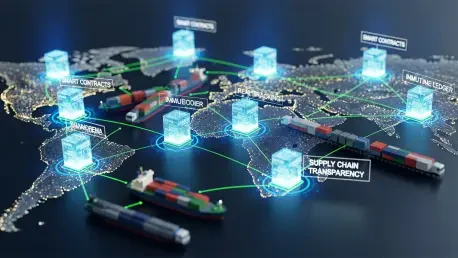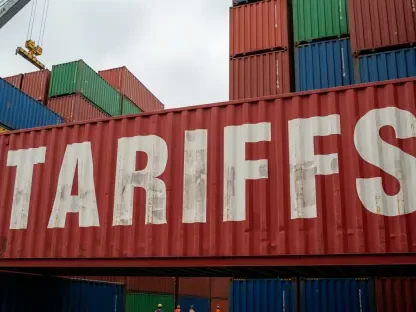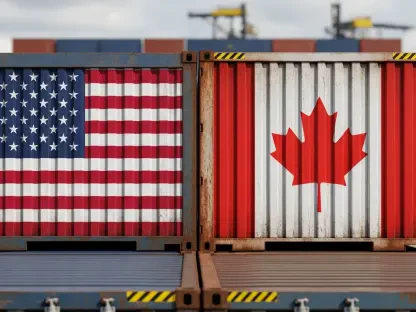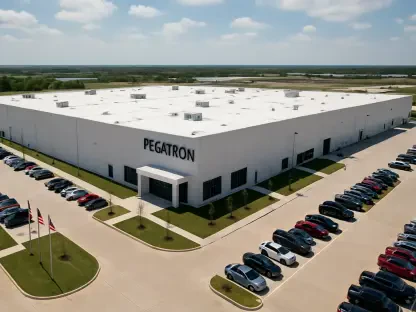Introduction and Context for the Review
Imagine a world where every shipment, from a container crossing oceans to a package arriving at a doorstep, is tracked in real time with absolute certainty, free from fraud or error. Blockchain technology is turning this vision into reality within the freight and transportation industry, offering a decentralized and secure framework to manage intricate supply chains. This review explores how blockchain has evolved, dissecting its core features and performance metrics while evaluating its transformative impact on various applications in freight logistics. The goal is to deliver a comprehensive understanding of blockchain’s current capabilities and its potential to redefine the movement of goods on a global scale.
Understanding Blockchain Technology in Freight Transportation
Blockchain technology, at its essence, is a digital ledger system that records transactions across a network of computers, ensuring data integrity without a central authority. Its principles of decentralization, immutability, and transparency address longstanding issues in freight transportation, such as inefficiencies, fraud, and mistrust among stakeholders. Within this sector, blockchain emerges as a solution to streamline operations by providing a tamper-proof record of every step in the supply chain journey.
The relevance of blockchain in logistics cannot be overstated, particularly in an industry plagued by fragmented systems and opaque processes. Traditional methods often rely on paper-based documentation and siloed data, leading to delays and disputes. By contrast, blockchain creates a shared, unalterable record that all parties can access, fostering trust and reducing the risk of errors in transactions like shipping agreements or customs declarations.
This technology positions itself as a transformative force in the broader landscape of logistics innovation. As global trade continues to grow, surpassing trillions annually, the need for reliable and efficient systems becomes paramount. Blockchain stands out as a tool to bridge gaps in communication and accountability, paving the way for a more connected and responsive freight ecosystem.
Core Features and Technical Components of Blockchain
Decentralized Ledger for Supply Chain Transparency
A cornerstone of blockchain is its decentralized ledger, which distributes data across a network rather than storing it in a single location. In freight transportation, this feature enables real-time visibility into shipments, allowing stakeholders—shippers, carriers, and customers—to track goods at every stage. The transparency provided by this system minimizes discrepancies, as all parties reference the same immutable data source.
This enhanced traceability proves vital in building trust within the supply chain. For instance, when a container moves through multiple ports, each transaction or update is recorded on the blockchain, creating a verifiable history that reduces the likelihood of fraud or tampering. Such capability is especially critical in high-stakes scenarios involving perishable goods or high-value cargo, where accuracy is non-negotiable.
Moreover, the decentralized nature of blockchain mitigates risks associated with centralized failures. Unlike traditional databases vulnerable to hacks or outages, the distributed ledger ensures data remains accessible and secure even if parts of the network are compromised. This resilience offers a significant advantage in maintaining operational continuity across global freight networks.
Smart Contracts for Automated Processes
Another pivotal component of blockchain is the use of smart contracts, which are self-executing agreements with predefined rules encoded on the blockchain. In freight transportation, these contracts automate key processes such as payments, customs clearances, and delivery confirmations, drastically cutting down on manual intervention. The result is a smoother workflow that saves time and reduces human error.
The performance benefits of smart contracts are evident in their ability to expedite transactions. For example, upon a shipment reaching its destination, a smart contract can instantly trigger payment to the carrier, bypassing lengthy reconciliation processes. Real-world applications, such as in port operations, demonstrate how these automated agreements streamline interactions between shippers and customs authorities, ensuring faster turnaround times.
Beyond efficiency, smart contracts enhance reliability by enforcing compliance through code. Conditions must be met for actions to occur, meaning disputes over unmet terms are minimized. As adoption grows, this feature is proving instrumental in transforming complex logistics operations into seamless, trust-based systems, particularly in cross-border trade scenarios.
Recent Developments and Trends in Blockchain for Freight
The freight industry has witnessed remarkable advancements in blockchain technology, driven by integration with cutting-edge tools like artificial intelligence and the Internet of Things. These combinations enable enhanced data analytics, allowing for predictive insights into shipment delays or maintenance needs. Such innovations are pushing blockchain beyond mere record-keeping into a realm of proactive decision-making.
Emerging trends also point to the rise of industry-wide blockchain consortia, where competitors collaborate on shared platforms to standardize processes. These alliances are reshaping stakeholder behavior, encouraging a shift toward collective problem-solving over isolated efforts. The focus on interoperability within these networks ensures that diverse systems can communicate effectively, amplifying blockchain’s reach across logistics.
Additionally, the trajectory of blockchain adoption is influenced by a growing emphasis on sustainability and efficiency. Companies are leveraging blockchain to optimize routes and reduce carbon footprints by sharing verified data on fleet performance. This trend aligns with broader industry goals of environmental responsibility, positioning blockchain as a key player in creating greener supply chains.
Real-World Applications of Blockchain in Freight Transportation
Blockchain’s practical deployment spans multiple freight sectors, including marine, rail, trucking, and third-party logistics providers. In marine shipping, platforms utilizing blockchain facilitate digital documentation at ports, eliminating paper-based delays and ensuring seamless data exchange between parties. This has proven especially effective in managing bills of lading and other critical paperwork.
In the realm of trucking and last-mile delivery, blockchain enhances efficiency by enabling real-time shipment tracking accessible to all stakeholders. For instance, retailers and customers can monitor package status through a secure ledger, improving delivery accuracy and customer satisfaction. Such applications highlight blockchain’s role in addressing pain points in urban logistics.
Cross-border trade also benefits significantly from blockchain implementations. By providing a unified record of transactions, customs processes are simplified, reducing wait times and compliance costs. Notable projects in this space demonstrate how blockchain fosters collaboration between governments and private entities, smoothing the flow of goods across international boundaries.
Challenges and Limitations of Blockchain in Freight
Despite its promise, blockchain faces several technical hurdles in freight transportation, with scalability being a primary concern. Current blockchain networks often struggle to handle the vast volume of transactions generated by global supply chains, leading to slower processing times. Efforts to develop more scalable solutions are underway, but widespread implementation remains a work in progress.
Regulatory uncertainties further complicate adoption, particularly around data privacy and cross-border compliance. Different jurisdictions have varying rules on data storage and sharing, creating a patchwork of legal challenges for blockchain platforms operating globally. Industry players are working on standardized protocols to navigate these issues, though consensus has yet to be fully achieved.
Market barriers, such as high initial costs and slow industry uptake, also pose significant obstacles. Implementing blockchain requires substantial investment in infrastructure and training, which can deter smaller firms. Pilot projects and partnerships aim to lower these entry barriers, but the pace of change remains gradual, reflecting the cautious approach of many logistics stakeholders.
Future Outlook for Blockchain in Freight Transportation
Looking ahead, blockchain holds immense potential to revolutionize freight transportation through the development of interoperable networks. As platforms become more compatible across regions and sectors, the vision of a fully connected supply chain ecosystem draws closer. This could enable seamless data sharing, further enhancing efficiency and trust among global partners.
Integration with emerging technologies is another area poised for breakthroughs. Combining blockchain with advancements like autonomous vehicles or drone delivery systems could create highly automated logistics frameworks. Such synergies promise to reduce costs and improve delivery precision, particularly in challenging terrains or congested urban areas.
The long-term impact of blockchain may lie in its ability to foster resilient and sustainable supply chains. By providing transparent data on emissions and resource use, blockchain can support initiatives aimed at reducing environmental impact. As adoption scales, its role in driving accountability and innovation across the freight industry is expected to grow, shaping a more adaptive future.
Conclusion and Key Takeaways
Reflecting on this exploration, blockchain stands as a powerful catalyst for change in freight transportation, offering unmatched transparency and efficiency through its decentralized and automated features. Its real-world applications demonstrate tangible benefits, from streamlined port operations to enhanced last-mile delivery, while recent trends point to a collaborative and tech-driven evolution. Challenges like scalability and regulatory hurdles persist, yet efforts to address them show promise for broader adoption.
Moving forward, stakeholders should prioritize investment in scalable solutions and advocate for standardized regulations to ease cross-border complexities. Collaborating through consortia could accelerate progress, ensuring blockchain’s benefits reach smaller players in the market. Additionally, exploring integrations with emerging tools offers a pathway to innovate further, building supply chains that are not only efficient but also sustainable. The journey of blockchain in freight transportation underscores a transformative shift, urging the industry to embrace adaptability as the cornerstone of future success.









